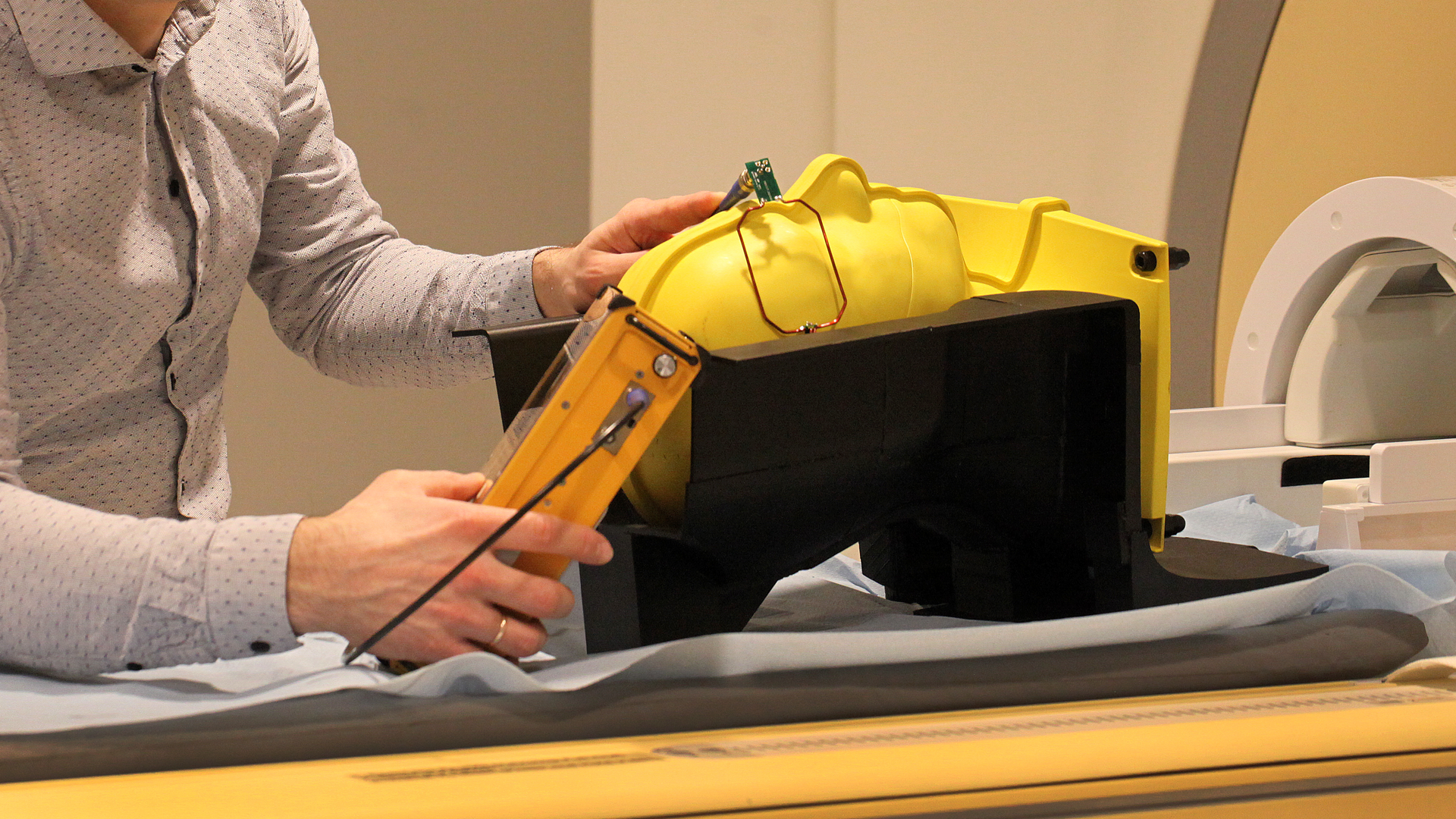Teaching in courses:
Research Group
MRI Acquisition

Group leaders: Lars G. Hanson, Henrik Lundell and Vitaliy Zhurbenko
We improve the speed, robustness, and sensitivity of MR, ultimately benefiting patients via improved diagnostics and disease management. The methods include fundamental physics, coil/sequence development, and advanced data processing techniques for imaging and spectroscopy. Our methods are used for preclinical research at DTU and shared via hospital collaborations and publications.
Our research is carried out from both DTU Health Tech, DTU Space and the DRCMR at Copenhagen University Hospital Hvidovre.

Research projects
RF coils
An RF coil is the first component in the signal acquisition hardware chain and defines the quality of the signal and, consequently, clarity of the image. Our main research focus in this area is on efficient excitation of the nuclei as well as ultimate limit of MR signal detection through optimal RF coil design.

Vitaliy Zhurbenko Associate Professor Department of Space Research and Space Technology Phone: +45 45253820 vizh@dtu.dk
Wenjun Wang Postdoc Department of Health Technology Mobile: +45 71450742 wewan@dtu.dk
Rasmus Jepsen PhD Student Department of Space Research and Space Technology rasale@dtu.dk
Ultra-high field MR
Ultra-high field MRI scanners enable high spectral and spatial resolution but require attention to protocol design and data analysis. We develop experiments with applications for healthy and clinical populations with a focus on resolving small pathologies and metabolic alteration.

Hans Magnus Henrik Lundell Associate Professor, DRCMR, Hvidovre Hospital Department of Health Technology hmag@dtu.dk
Kristin Engel Industrial PhD Student Department of Health Technology krien@dtu.dk
Microstructure elucidation by MR
Relaxation and diffusion properties in tissue reflect microstructure. We optimize protocols for stratifying specific patterns in diffusion of water and metabolites to enhance specificity to microstructure for applications in neuroinflammation and neurodegeneration.

Projects: C-MORPH
People: Henrik Lundell, Kristin Engel
Collaborators: Samo Lasic, Faisal Mahmood, Itamar Ronen
Hans Magnus Henrik Lundell Associate Professor, DRCMR, Hvidovre Hospital Department of Health Technology hmag@dtu.dk
Kristin Engel Industrial PhD Student Department of Health Technology krien@dtu.dk
Hyperpolarized MR acquisition strategies
We develop optimized data acquisition strategies that are needed to make the most of the available scanning time, not least for hyperpolarized substances that lose their magnetization in minutes. Focuses are excitation schemes and sampling strategies, including high-performing gradients.

Project: Endpoint-driven measurement designs for hyperpolarized Magnetic Resonance
Project: Volumetric mapping of brain dynamics by hyperpolarized MRI
Collaborators: Pernille R. Jensen, Jan H. Ardenkjær-Larsen, Kristoffer H. Madsen, Mathilde H. Lerche, Edwin Versteeg, Dennis Klomp
People:
Vitaliy Zhurbenko Associate Professor Department of Space Research and Space Technology Phone: +45 45253820 vizh@dtu.dk
Lars G. Hanson Groupleader, Associate Professor Department of Health Technology Mobile: 60 61 13 62 lghan@dtu.dk
Group leaders:
Lars G. Hanson Groupleader, Associate Professor Department of Health Technology Mobile: 60 61 13 62 lghan@dtu.dk
Hans Magnus Henrik Lundell Associate Professor, DRCMR, Hvidovre Hospital Department of Health Technology hmag@dtu.dk
Teaching in courses:
Vitaliy Zhurbenko Associate Professor Department of Space Research and Space Technology Phone: +45 45253820 vizh@dtu.dk
Teaching in courses:
